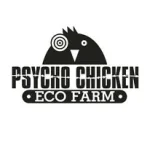While it would be easy to draw that conclusion from these inaccurate assumptions:
- people aren’t going to eat it
- it doesn’t even have flowers, bees won’t get hurt right?
- it’s not like we’re spraying anything
Here’s the problem:
- If those deer get shot and eaten, humans will likely receive low-dose pesticide exposure, and research is now turning up that shows neonicotinoid insecticides causing problems for human health: https://www.nrdc.org/experts/jennifer-sass/neonicotinoid-pesticides-bad-bees-and-may-be-bad-people-too
- In spite of not ‘flowering’ Honey Bees and other wild pollinators consume corn pollen. Just walk into a field while the tassels are out and you’ll see.
- Neonicotinoid pre-treated corn seed is coated with a pesticide that is absorbed into the plant as it grows, and winds up in every part of the plant, the pollen, the fruit, the leaves, so although there’s no chance of ‘over spray’ and less of a chance of acute poisoning due to direct exposure to the pesticide (except by inhalation when seeding) any insect that comes into contact with part of the plant will be exposed to the insecticide, and it’s now been shown that very low ‘sub-lethal’ concentrations of neonicotinoid insecticides are harmful to honey bees:
What the bigger picture? Honey bees alone are given credit for pollinating one third of all food consumed by humans. These insecticides are directly impacting pollinator’s ability to survive. Without pollination, the global food system is at risk–our ability to feed humanity is at risk.
New York Times:Decline of Pollinators Poses Threat to World Food Supply, Report Says






